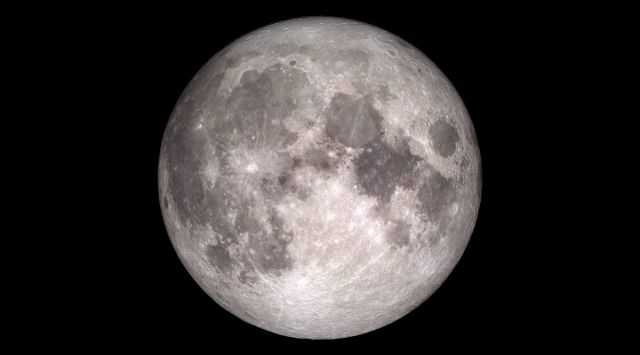Everything you need to know about the penumbral lunar eclipse on May 5
Two weeks after the solar eclipse on April 20, there is going to be a penumbral lunar eclipse on May 5. But this eclipse will be visible in India.
 The side of the Moon we see from the Earth as imaged by NASA's Lunar Reconnaissance Orbiter. (NASA/GSFC/Arizona State University)
The side of the Moon we see from the Earth as imaged by NASA's Lunar Reconnaissance Orbiter. (NASA/GSFC/Arizona State University) The remarkably rare hybrid solar eclipse on April 20 put on a great show for viewers in parts of Australia, Indonesia, East Timor and other regions. Typically, solar eclipses are followed by lunar eclipses and this time is no different. There will be a penumbral lunar eclipse on May 5, 2023.
When and at what time will the penumbral lunar eclipse happen?
Between 8.45 PM IST on May 5 and 1.02 AM IST on May 6, the Moon will pass through the Earth’s shadow, resulting in a lunar eclipse, according to In The Sky.
The Earth has a much larger relative size compared to the Moon, which means its shadow is also much larger than the natural satellite’s. This means that lunar eclipses are usually visible in wider parts of the world than solar eclipses.
The eclipse on May 5 should be visible in most locations where the Moon is above the horizon at the time. This includes Antarctica, Asia, Russia, Africa and Oceania.
 Visibility map of the lunar eclipse. (Image courtesy: In the Sky)
Visibility map of the lunar eclipse. (Image courtesy: In the Sky)
In New Delhi, the penumbral lunar eclipse will be visible in the south-eastern part of the sky, lying about 40 degrees above the horizon at the time of the greatest eclipse. The time of greatest eclipse should be around 10.45 PM.
What is a penumbral lunar eclipse and how will it look?
If the full moon was exactly on the opposite side of the Earth with respect to the Sun, there would be a total umbral eclipse of the Sun, completely blocking it out.
But on May 5, the full Moon is south of the Earth’s umbra or its dark shadow, according to EarthSky. This means that no part of the Moon will be completely darkened by the Earth’s umbra.
Unlike other kinds of eclipses, penumbral lunar eclipses are subtle events that are usually difficult to observe. During the May 5 eclipse, the Moon’s brightness will be reduced, but most of its disc will remain illuminated to some extent.
 How a penumbral lunar eclipse works. (Image credit: NASA)
How a penumbral lunar eclipse works. (Image credit: NASA)
How to view the penumbral lunar eclipse on May 5
Penumbral lunar eclipses usually have quite a subtle effect on the Moon and the effect is usually imperceptible unless you pay very close attention.
Of course, unlike a solar eclipse, lunar eclipses are safe to view with the naked eye and with other viewing equipment. You can make use of binoculars or a telescope to get a better view of the eclipse.







